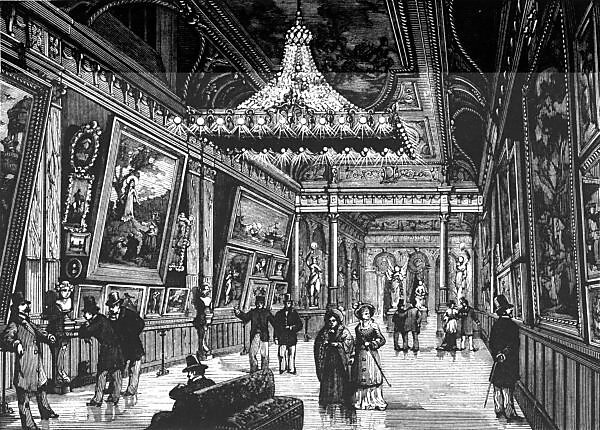The Edison Interior Drawings stand as a remarkable testament to the intersection of innovation and design in the early 20th century. Created during the height of Thomas Edison’s influence, these drawings offer insight into the architectural trends of the time and highlight the enduring impact of Edison’s vision on contemporary interior design. This article explores the historical context, key features, design principles, and legacy of the Edison Interior Drawings, shedding light on their significance in the world of design.
Historical Context
A. Background on Thomas Edison
Thomas Edison, best known for his inventions such as the phonograph and the electric light bulb, was not only a pioneer in technology but also an influential figure in architectural design. His approach combined practicality with aesthetics, reflecting the rapid technological advancements of his time.
B. Significance of Interior Design During Edison’s Era
The late 19th and early 20th centuries marked a period of transformation in interior design, characterized by a move towards functionality and comfort. As electricity became more widespread, designers began to explore new possibilities for lighting and layout, fundamentally changing the way spaces were conceived.
C. Influence of Technological Advancements on Design Aesthetics
Edison’s innovations played a crucial role in shaping interior spaces. The introduction of electric lighting, for example, allowed for more creative designs and a shift away from the reliance on gas and candles. This technological shift fostered an environment where aesthetics could flourish alongside functionality.
Overview of the Edison Interior Drawings
A. Description of Key Features
- Architectural Elements: The drawings often feature clean lines and symmetrical layouts, reflecting the principles of classic architecture while integrating modern sensibilities.
- Use of Space and Layout: Edison’s designs emphasize open spaces and thoughtful layouts, promoting a sense of flow and accessibility within interiors.
- Materials and Color Schemes: Natural materials such as wood and stone, combined with muted color palettes, create warm, inviting environments.
B. Notable Projects and Their Impact on Modern Design
Several key projects exemplify Edison’s design philosophy, including the interiors of early electrical laboratories and demonstration spaces. These projects have inspired countless contemporary designs that seek to balance functionality with aesthetic appeal.
Analyzing the Design Principles
A. Key Design Principles Reflected in the Drawings
- Functionality: Edison’s designs prioritize usability, ensuring that spaces are not only beautiful but also practical for everyday life.
- Balance and Symmetry: The use of symmetrical layouts creates a harmonious environment, appealing to the human eye and fostering a sense of order.
- Innovation in Design: Edison’s willingness to experiment with new materials and technologies paved the way for modern design practices.
B. Application of Principles in Contemporary Interior Design
Today’s designers can draw inspiration from Edison’s principles by prioritizing functionality, creating balanced spaces, and embracing innovation. These elements remain relevant as designers continue to push boundaries in pursuit of both beauty and practicality.
The Role of Edison’s Designs in Modern Interiors
A. Adaptations of Edison’s Style
Many contemporary interior designers have adopted elements of Edison’s style, incorporating vintage furnishings, open layouts, and innovative lighting solutions to create inviting and functional spaces.
B. Case Studies of Modern Spaces
Case studies reveal how Edison’s design philosophy influences modern homes, commercial spaces, and public buildings. For instance, many restaurants and cafes today utilize Edison-style fixtures and layouts that encourage social interaction and comfort.
C. Fusion of Vintage and Modern Elements
The fusion of vintage elements from Edison’s era with modern design techniques results in spaces that are both nostalgic and innovative, appealing to a wide audience.
The Legacy of Edison Interior Drawings
A. Influence on Contemporary Designers
Edison’s designs continue to inspire a new generation of interior designers who value the blend of functionality and aesthetics. His approach encourages the exploration of new materials and technologies.
B. Ongoing Relevance of Design Philosophy
The principles underlying the Edison Interior Drawings remain relevant as designers face contemporary challenges, such as sustainability and efficiency, all while maintaining aesthetic integrity.
C. Preservation of Historical Drawings
Efforts to preserve Edison’s drawings and documents ensure that future generations can learn from his vision, providing a valuable resource for architects and designers alike.
Conclusion
The Edison’s Interior Drawings represent more than just a collection of architectural sketches; they embody a vision of how technology and design can coexist harmoniously. Their influence is evident in modern interior design, encouraging a balance of function and beauty that resonates today. Exploring Edison’s work opens a window to understanding the past while inspiring the future of design.
VII. Additional Resources
A. Suggested Readings
- “Thomas Edison: A Life of Invention” by Paul Israel
- “The Design of Everyday Things” by Don Norman
B. Online Resources
- The Thomas Edison National Historical Park website
- Architectural Digest’s archives on historical design
C. Related Topics for Further Research
- The evolution of interior design in the 20th century
- The impact of electricity on architecture and design



